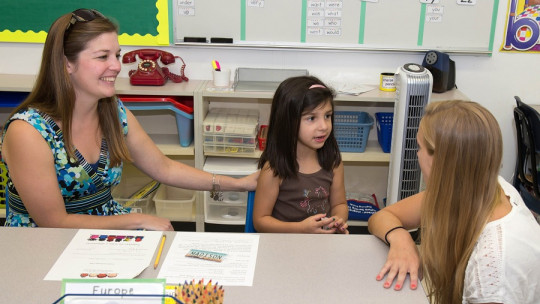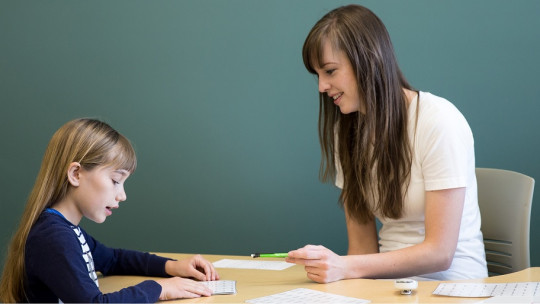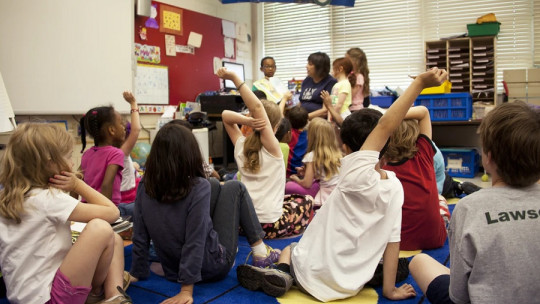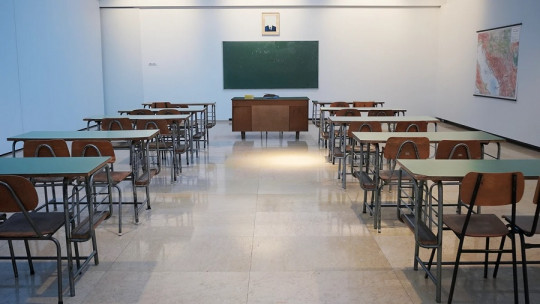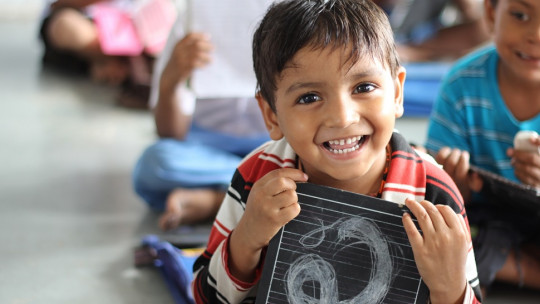
Knowing what difficulties a student may present is essential to ensure that they manage to acquire the knowledge requested in the school curriculum. Otherwise, the child may be left behind, having serious problems in the future, mixed with frustration and loss of interest in studies.
The main objective of psychopedagogical diagnosis is to detect difficulties in the student to later design guidelines to improve their learning capacity, involving both teachers and family members.
Below we will see this tool in more depth, what objectives it has, what functions it fulfills, what elements must be involved in its implementation and what dimensions it evaluates.
What is psychopedagogical diagnosis?
Psychopedagogical diagnosis is the process through which it is describe, classify, predict and, if necessary, explain the student’s behavior in the school context, relating it to other systems involved in their education, such as the family and the community. This process includes the set of measurement and evaluation activities of the person or institution in order to provide guidance about the student in question.
Psychopedagogical diagnosis constitutes a very important element in the work of educational professionals, such as educators, teachers and learning promoters. The process is aimed at assess the level of development and learning of boys and girls, evaluating their skills, abilities and habits, in addition to knowing the quality of their affective processes. Knowing all this, the purpose is to inform the educator of the most appropriate way to promote the child’s development.
Objectives of this tool
There are several objectives of psychopedagogical diagnosis, although these can be summarized, fundamentally, in the following.
1. Check student progress
The intention is to check the student’s progress towards the educational goals established in the school curriculum. These goals fundamentally comprise three areas: the cognitive, the affective and the psychomotor
2. Identify factors that may interfere with your education
The objective is to identify which factors in the teaching-learning context can interfere with the development of the individual.
That is to say, The aim is to know the possibilities and limitations that the child has when it comes to learning both inherent to himself and originating from the environment in which he is growing up, such as disorders such as an unfavorable family economic situation.
3. Adapt the student’s teaching-learning
Finally, the objective is to adapt the teaching-learning situation, that is, to adapt educational strategies in such a way that the individual acquires the knowledge required in the academic curriculum. To achieve this, It should be taken into account how the student is progressing, helping him to overcome difficulties and, if they occur, correct delays in learning school content.
Features
Based on the objectives that we have just seen about psychopedagogical diagnosis, we can highlight the following functions of this tool.
1. Prevention and prediction
It allows us to know the possibilities and limitations of the individual, in order to foresee their development and the course of learning in the future
2. Identification of the problem and severity
As its name indicates, this tool is diagnostic and, therefore, has the function of finding out the causes, both personal and environmental, that hinder the student’s development.
3. Orientation
Once the student’s needs have been detected, the psychopedagogical diagnosis serves to design an intervention plan whose guidelines are focused on the resolution and improvement of the development and learning of the individual.
4. Correction
The intention is to reorganize the individual’s current situation through the application of the intervention along with any necessary recommendations.
Essential principles
When preparing the psychopedagogical diagnosis, a series of principles must be followed to make it as exhaustive as possible. The intention of all this is to ensure that the application of a tool that can shape the child’s future is properly and well administered.
Ignoring fundamental aspects of the child’s life and assuming that their problems may be due to a learning disorder, such as ADHD or dyslexia, ignoring possible sociocultural conditions can do more harm than good to their development. That is why The psychopedagogue must ensure that he takes into account the following four principles in the realization and application of this tool
1. Territorial character
The subject develops in a place in the world, that is, it is in contact with phenomena located in a space, in a territory. Among these phenomena we can find customs, traditions, the language and jargon used, socioeconomic opportunities…
2. Age-generic character
Personality development does not occur in a fragmented way. Personality traits are aspects that evolve progressively during childhood forming a continuum.
3. Dynamic character
This dynamic character materializes when the diagnosis is carried out permanently. This means that it not only serves to define how to help infants, but also allows give feedback about how effective the treatment being applied is
4. Systemic character
It is said that this tool has a systemic character in that it takes an integrated view of the infant’s development. Therefore, the functions of the infant should not be studied separately, or considered as independent aspects. There are correlations between psychic and somatic development, with which It is expected that mental aspects will go hand in hand with their way of relating to the world and their degree of psychomotor development
Elements involved
There are several elements that are involved during the development and application of this psychopedagogical tool:
1. The school
The school is a social institution that can be considered as an open system that shares functions with other systems that integrate the entire social environment experienced by the student.
This system has a lot of interrelation with another: the family. These two systems must act as complementary systems, since it is the interaction between them that will determine the success or failure of the child’s learning process.
The school can become an institution that enhances the child’s learning or, it can also be a source of conflict depending on how the content to be taught is structured and relates to the different hierarchical levels or other systems and subsystems.
2. The teacher
The teacher is a fundamental figure in the educational process It is a professional who belongs to and acts in different subsystems at the same time, given that he is immersed in the same community in which the student is a part, sharing his classroom, being in the same school, his same city or surrounding areas and getting involved in community phenomena. several.
At the same time, it also establishes direct contact with the student’s parents and other teachers involved in their education.
The teacher has the responsibility of promoting the development of his students through the teaching of content, habits and values that will lay the foundations for a pattern of behavior and knowledge appropriate for future responsible citizens.
3. The student
The student plays several roles in the educational process, being a beneficiary in all of them That is, the teaching is directed towards him.
However, this does not mean that he simply acts as a student, since in class he is also a companion and friend of other students, while when he gets home, where the educational process also takes place, he is a son, grandson, nephew, brother. minor/major… In short, the student is impossible to separate from other systems.
4. The family
The family is a system that has the psychosocial function of protecting its members especially the little ones, in addition to having the function of transmitting and helping the boy or girl adapt to their culture.
This institution is not neutral. You live in a sociocultural context and have a family culture that influences your ideology, habits and values, which will undoubtedly influence the way you educate your children. This family educational method can come into direct conflict with how things are done at school, producing tensions between parents and teachers and causing the student to suffer.
5. The psychopedagogue
The psychopedagogue It is the link between these systems You can be part of the school’s own team, or of different educational administrations involved in detecting problems in the classroom and in the family environment.
This figure relates and coordinates with other institutions, such as municipal services, rehabilitation and mental health centers, parents’ and students’ associations…
The main function of the psychopedagogue is contribute to establishing a context of collaboration between the different stakeholders especially with teachers, defining the way in which the student should be intervened.
Dimensions and areas of action
The psychopedagogical diagnosis takes into account various personal and environmental dimensions of the student It is necessary to take into account the educational and social context in which the student is immersed, that is, his family, his school and the community. These systems influence, as we have mentioned previously, the student’s performance, both in school and in their emotional, psychological and physical development.
On a personal level, that is, on the student, we have the biological, psychomotor, cognitive, motivational, affective and social dimensions. Regarding the socio-environmental dimensions, we have the educational center, parent group, family and community.
1. Biological
2. Psychomotor skills
3. Cognitive
4. Cognitive
- Beliefs
- Memory
- Imagination
- Problem resolution
5. Motivational
- Expectations
- Powers
- Interests
- Attitudes
6. Affectivity
- Personal history
- Emotional stability
- Personality
- Personal adaptation
-
Selfconcept
7.Social
- Development and social adaptation
- Social skills
- Interaction with others
8. Educational center
- Physical and architectural aspects
- Resources
- Organization and operation
- Educational project
- Supporting services
- Sociodemographics
- Psychosocial aspects
9. Parent group
- Sociostructural aspects
- Procedural aspects
- Socio-academic aspects
10. Family
- Relationships with family and community
- Socioeconomic aspects
- Socio-academic aspects
11. Community
- Socio-structural and demographic aspects.
- Processual aspects (values, attitudes, interests…)
- Socio-academic aspects
- Bassedas, E., Huguet, T., Marrodán, M., Oliván, M., Planas, M., Rossell, M., and others (1991). Educational intervention and psychopedagogical diagnosis. Barcelona: Laia
- Cardona, MC, Chiner, E. & Lattur, A. (2006) Psychopedagogical Diagnosis. San Vicente: University Club.
- García Ugalde, JM, & Peña Velázquez Aidé S. (2005). Psychopedagogical diagnosis in special education: A case study. (Bachelor Thesis). Hidalgo: Autonomous University of the State of Hidalgo, Institute of Health Sciences, Psychology.

